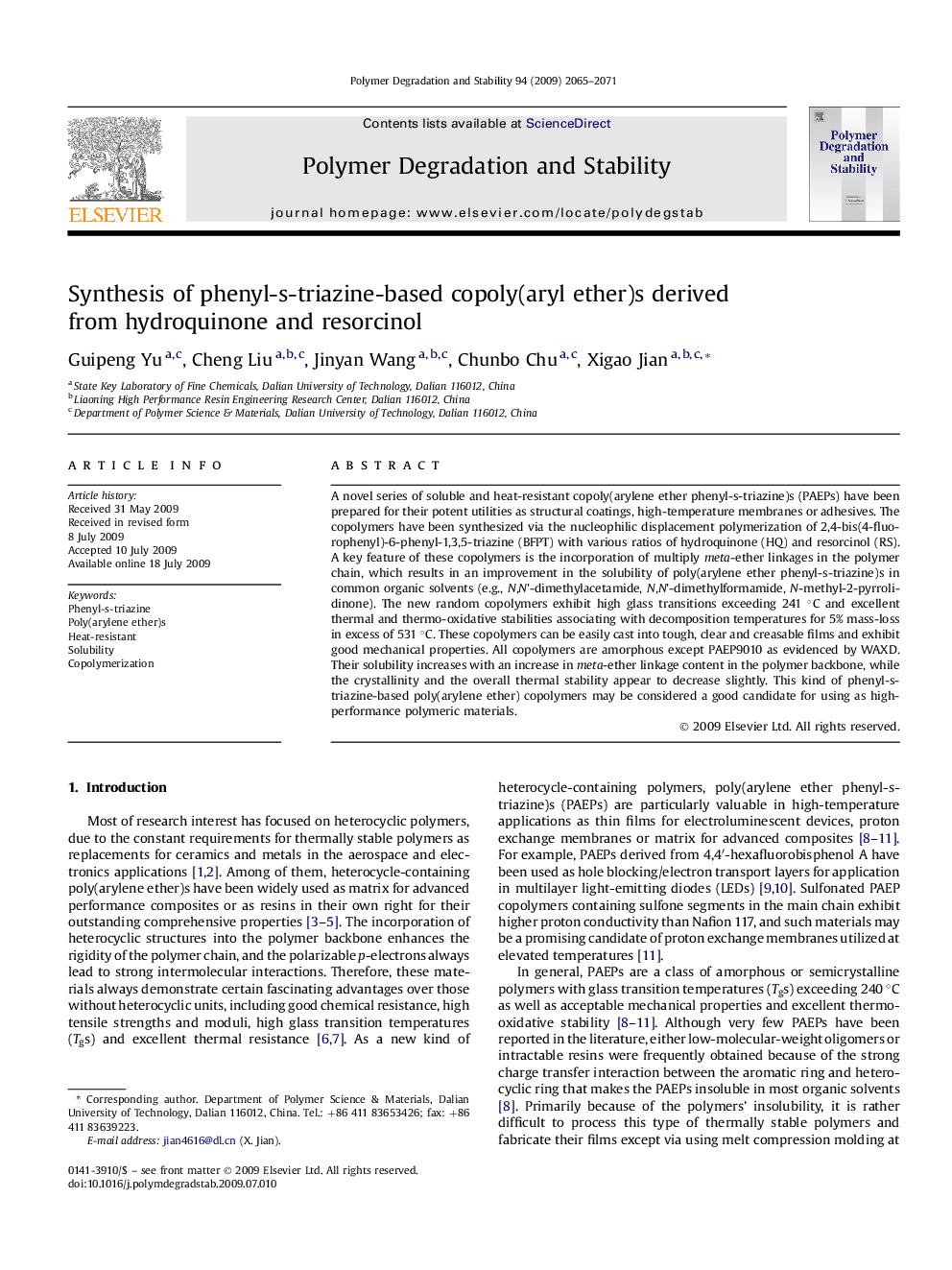| Article ID | Journal | Published Year | Pages | File Type |
|---|---|---|---|---|
| 5203769 | Polymer Degradation and Stability | 2009 | 7 Pages |
Abstract
A novel series of soluble and heat-resistant copoly(arylene ether phenyl-s-triazine)s (PAEPs) have been prepared for their potent utilities as structural coatings, high-temperature membranes or adhesives. The copolymers have been synthesized via the nucleophilic displacement polymerization of 2,4-bis(4-fluorophenyl)-6-phenyl-1,3,5-triazine (BFPT) with various ratios of hydroquinone (HQ) and resorcinol (RS). A key feature of these copolymers is the incorporation of multiply meta-ether linkages in the polymer chain, which results in an improvement in the solubility of poly(arylene ether phenyl-s-triazine)s in common organic solvents (e.g., N,N'-dimethylacetamide, N,N'-dimethylformamide, N-methyl-2-pyrrolidinone). The new random copolymers exhibit high glass transitions exceeding 241 °C and excellent thermal and thermo-oxidative stabilities associating with decomposition temperatures for 5% mass-loss in excess of 531 °C. These copolymers can be easily cast into tough, clear and creasable films and exhibit good mechanical properties. All copolymers are amorphous except PAEP9010 as evidenced by WAXD. Their solubility increases with an increase in meta-ether linkage content in the polymer backbone, while the crystallinity and the overall thermal stability appear to decrease slightly. This kind of phenyl-s-triazine-based poly(arylene ether) copolymers may be considered a good candidate for using as high-performance polymeric materials.
Related Topics
Physical Sciences and Engineering
Chemistry
Organic Chemistry
Authors
Guipeng Yu, Cheng Liu, Jinyan Wang, Chunbo Chu, Xigao Jian,
